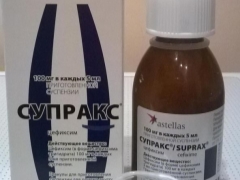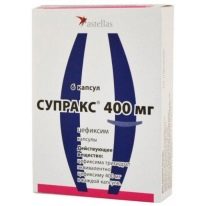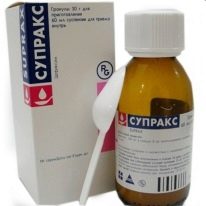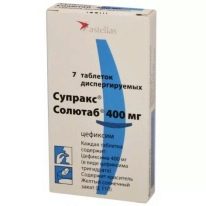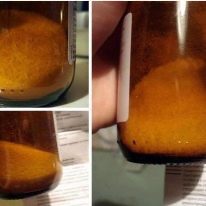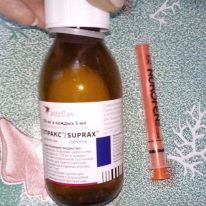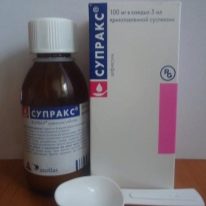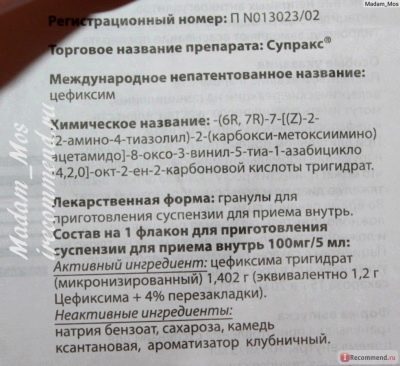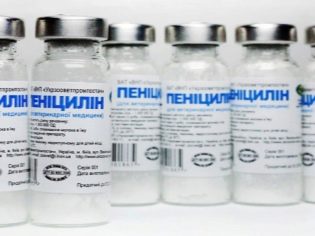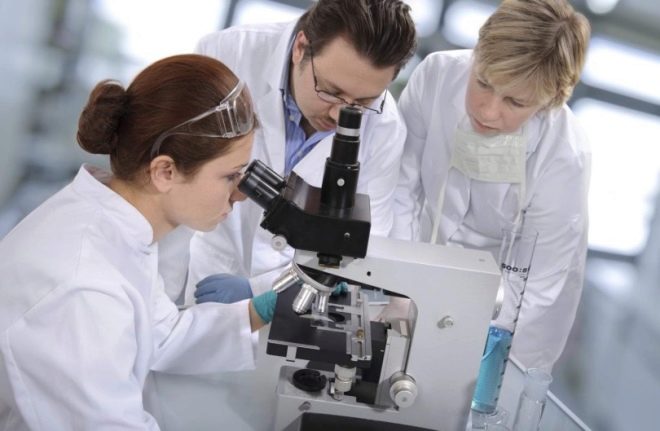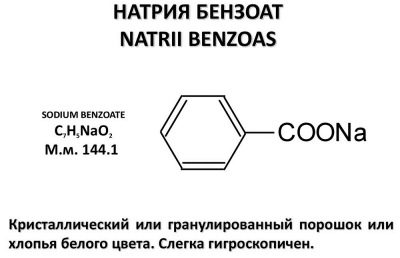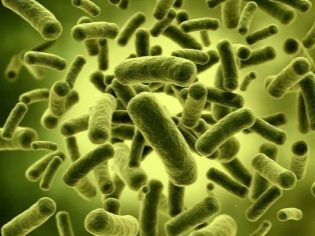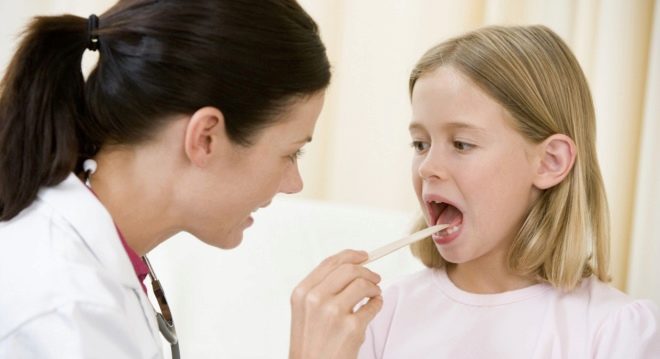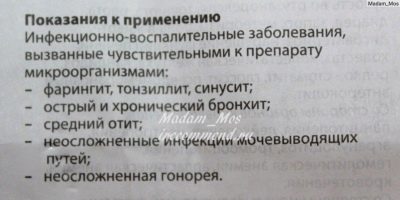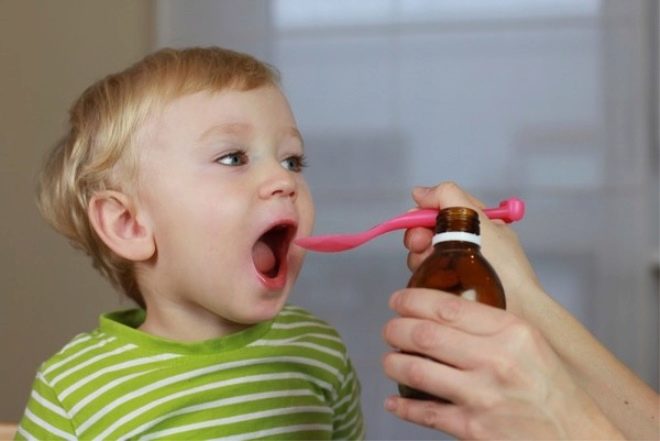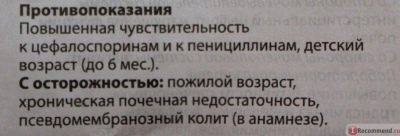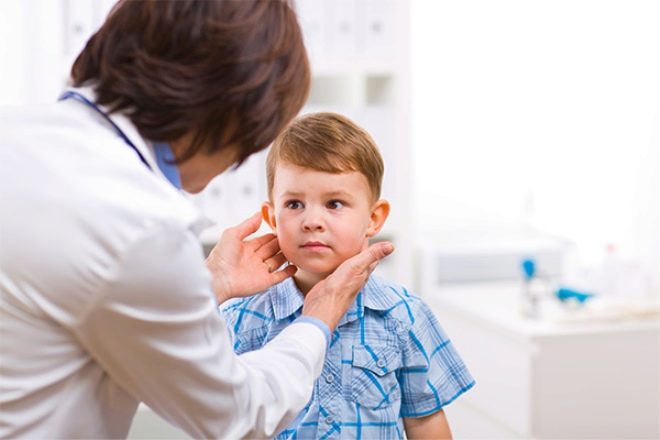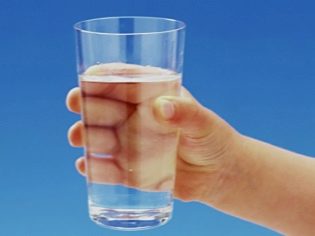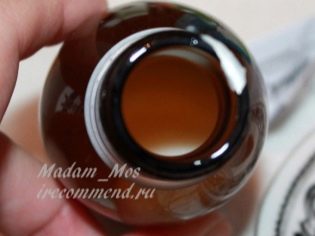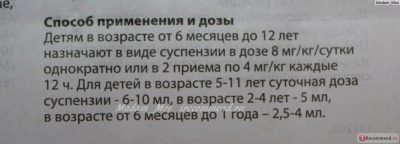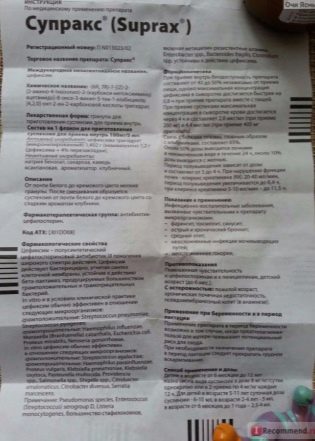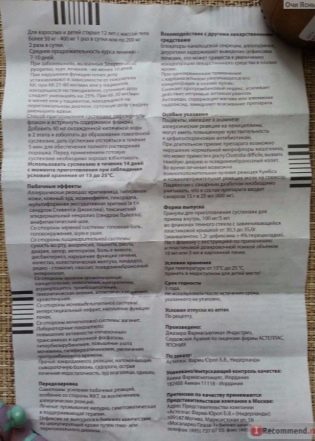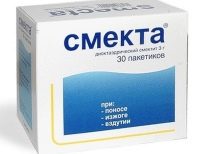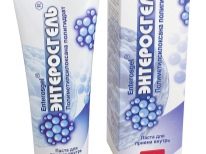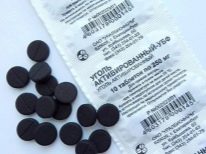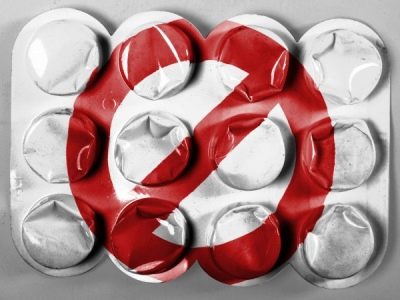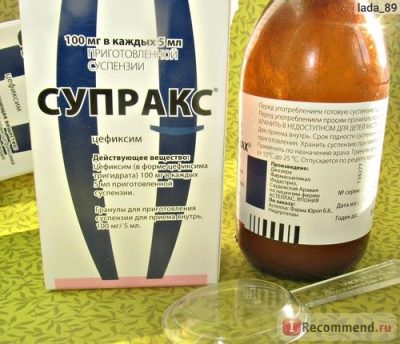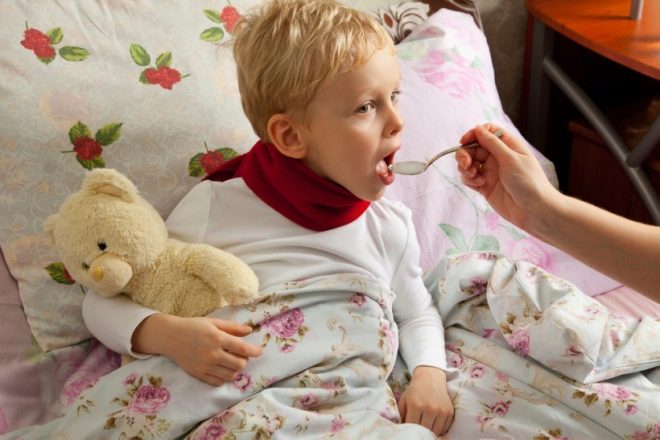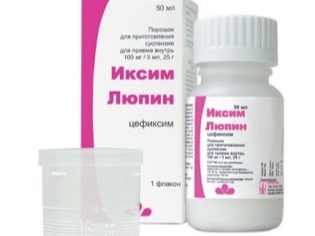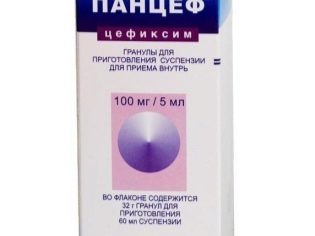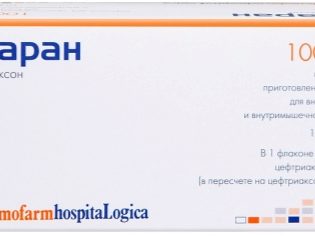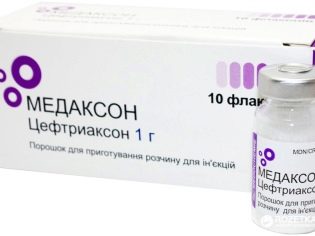Suspension "Supraks" for children: instructions for use
The use of antibiotics to treat children often raises questions from parents. However, new-generation drugs, such as "Suprax", Practically do no harm, but help the child's body to cope with formidable infections. The main thing is to follow the instructions and recommendations of the doctor.
Release form
"Supraks" is produced in several formats: capsules of 400 mg, granules for the preparation of suspensions, and dispersible, i.e. soluble tablets "Supraks Solyutab." Previously produced capsules of 200 mg, but now they are discontinued. Regardless of which form of medication is used for treatment, Supraks and Supraks Solutab are always taken orally, i.e., by mouth.
Granules look like balls of small diameter of white or pale beige color. In the production of capsules packaged in vials. The box also contains a syringe or measuring spoon to measure the required amount of water. Preparing a suspension at home according to the instructions for use of the drug. Dissolving in water, the granules turn into a suspension - a suspension of fine solid particles that smells like strawberries. This special children's form "Supraks" is very convenient for small children who do not know how to swallow tablets and capsules.
The pleasant taste and smell in combination with a neutral color and a familiar texture, similar to mashed potatoes or cottage cheese, does not cause in children a negative emotional reaction to the medicine.
Each vial contains about 35 grams of granules, which, after contact with water, turn into a suspension with a concentration of the main active ingredient of 100 mg per 5 ml.
Sometimes granules are confused with capsules, but it is important for parents to remember that these are different forms of drug release. In capsules, the content of the active substance is higher, so they have age restrictions on use.
The finished suspension is also not made, therefore, buying medicine in a pharmacy, you need to be careful.
Composition
The dosage of the drug is of great importance in the treatment of children, because "Supraks" refers to antibiotics cephalosporins of the 3rd generation. The main active ingredient of the drug - the antibiotic cefexim, is contained in the preparation not in pure form, but in the compound. So the main component is able to survive in the stomach.
In 35 grams of granules in one bottle, the content of cefixime trihydrate is 1.4 grams. When water is added, a suspension is obtained with a concentration of the main component of 100 mg per 5 ml.
Recently, many parents have been negatively disposed towards the treatment of children with antibiotics. This has a definite meaning, since these substances have side effects that can harm a developing organism.
However, not all so simple. The antibiotics invented at the beginning of the 20th century made a revolution in medicine, simultaneously increasing its ability to treat a variety of diseases. Previously, diseases such as pneumonia, peritonitis, any acute inflammation, including purulent wounds, were actually fatal, since only the strongest people survived. As a result of epidemics of plague, typhus, cholera, entire cities died out.
Recall, at least, the pandemic of the “Spanish flu” - the usual flu, from which 5% of the world's population died. But after the invention of penicillin, which was the first of this group of drugs, physicians literally began to work wonders, curing seemingly hopeless patients.
Later, doctors noticed that the widely used antibiotics help less and less, but the next generation of drugs appeared, and again it all happened again: high efficiency was replaced by an almost complete lack of effect. Scientists have found that bacteria and viruses are able to adapt to the action of antibiotics, becoming resistant to them, producing special substances - beta-lactamase. This means that antibiotics are not all powerful.
But science does not stand still. Scientists all over the world are constantly working on new drugs that can overcome disease. One such substance is cefexim, whose action overcomes the protection of beta-lactamase. At the same time, the possible negative effects of treatment are minimized.
In addition to the main, granules "Supraks" contain and excipients. These are xanthan gum, sodium benzoate, strawberry flavor, and sucrose. If the purpose of the last two components need not be explained, then why the other two are needed requires clarification. Xanthan gum is a natural chemical compound consisting of carbon, hydrogen and oxygen. This substance is often used as a food additive, in particular, a thickener that helps to create a mass of homogeneous consistency. This function is assigned to him and in the granules "Supraks".
Sodium benzoate, despite the consonant name, is not related to gasoline. This is a salt of the acid, which was discovered as early as 1875 as a substitute for salicylic acid, the active substance of ordinary aspirin. In the granules "Supraks" the ability of this substance to suppress pathogenic fungi is used. Studies conducted including under the auspices of the World Health Organization show it relative harmlessness when used in pharmacological doses.
Operating principle
Cefixime is a broad-spectrum antibiotic. This means that when it enters the body and interacts with harmful bacteria and viruses, the drug does not act selectively, destroying a certain type of pathogens, and has an impact on a large number of microorganisms, including such common ones as staphylococcus, cytobacteria, Morgan bacterium, Salmonella, Proteus vulgaris .
Cefixime inhibits the synthesis of the cell wall of bacteria, thereby preventing them from multiplying, which leads to a gradual reduction of their colonies and death. However, it is resistant to beta-lactamases - protective substances that emit bacteria, protecting themselves from antibiotics.
Studies show that The bioavailability of a substance, i.e., the percentage that the body absorbs when administered, reaches 50%. This is a very high figure for antibiotics. In addition, absorption is not affected by the interval with food intake. The main part of the drug is eliminated from the body during the day with urine, and partly with bile.
Indications
The bactericidal effect of Suprax makes the medicine a reliable tool for the treatment of inflammation. In the ENT practice, the suspension is used for tonsillitis - inflammation of the tonsils, pharyngitis - pharynx, sinusitis - paranasal sinuses, and otitis - the middle ear and other inflammations of the upper and lower respiratory tract - bronchitis, laryngitis, tracheitis.
Angina is also an indication for treatment "Supraksom", so often called acute tonsillitis. Most often, this disease, which is manifested in inflammation of the tonsils and other parts of the palatine ring, is caused by staphylococci or streptococci. But not all reddening of the throat is a sore throat and requires the use of an antibiotic, especially as powerful as Supraks.
In order to avoid the development of resistance, i.e.resistance to antibiotics, parents need a very balanced approach to their use in the treatment of children. Do not give children the drugs in this group without a doctor's prescription.
At the same time, if the doctor recommends antibiotic treatment, then you do not need to abandon it or delay the beginning of the reception. This can aggravate the condition of the child.
Used suspension "Supradeks" and for the relief of inflammatory processes of the urinary system - cystitis, urethritis.
From what age is prescribed?
Suspension "Supraks" approved for use in infants from 6 months. Instructions for use do not contain more accurate parameters, however, indicates that in children up to six months the suspension “Supraks” can be used strictly and exclusively for the purpose and under the supervision of the attending physician and only if it cannot be replaced with another drug.
From 6 months to 12 years, a suspension is recommended, for children over 12 years old - tablets and capsules. The fact is that the suspension contains the optimal concentration of the active ingredient for young children, has a pleasant smell and taste and is easily swallowed. For older children, it will be necessary to take too much of the suspension.
Contraindications
Instructions for the use of granules for the preparation of suspensions "Supraks" contains a list of cases when the use of the drug for the treatment of children is contraindicated. First, it is the previously identified increased individual sensitivity or intolerance to the main or auxiliary components of the drug. Most often, in practice, antibiotic intolerance is encountered, since other components are relatively harmless.
If intolerance is manifested, then the medication should be urgently stopped and reported to the attending physician, who will give recommendations for further action. You do not need to continue taking it, expecting that the child’s body will “get used” to the medicine.
The second case, when taking Supraks suspension is not recommended, is a serious impairment of renal function. This is due to the fact that the drug is excreted from the body through the urinary system, and the kidneys thus take on additional stress.
If your doctor prescribes this drug for your child, tell them about the disease. The specialist will take the final decision on the use of the medication only on the basis of complete information about the child’s health, guided by the principle that the medication used for treatment should be of more benefit than harm.
With caution, carefully weighing the possible consequences, the suspension "Supraks" prescribed to children suffering from chronic renal failure, as well as in diseases such as pseudomembranous colitis, including in history. The fact is that this acute inflammation of the intestines sometimes occurs while taking antibiotics or other drugs.
Side effects
During treatment with Suprax, children may experience unwanted side effects associated with the effects of the drug on the body.
The most common side effects associated with the gastrointestinal tract. Their manifestations are diverse - from a decrease or loss of appetite and dry mouth to pain, bloating, abnormal stool and dysbiosis. There are cases of violations of the functional state of the liver, jaundice, pseudomembrane colitis. Some children develop stomatitis.
The central nervous system can also respond to medication. The child may complain of dizziness, tinnitus, or seizures may occur. Allergic reactions often appear on the skin in the form of a rash, redness, itching. Possible swelling of soft tissues, including in the area of the external genital organs and face, up to angioedema.
Various abnormalities can be detected by clinical blood tests. These are some kinds anemia, including hemolytic, reducing the number of leukocytes in the blood, the destruction of red blood cells and others.
But if the doctor can see the irregularities in the blood tests, then the other symptoms are likely to be noticed first by the parents. It is especially important to be attentive to the condition and behavior of young children and babies who cannot themselves say about the disturbing manifestations.
So, if a child cries for no reason, often wakes up at night, and is naughty in the daytime, refuses to take habitual food, then this should be reported to your doctor. Perhaps the baby signals the behavior of the deterioration associated with the side effects of the drug.
The decision to cancel treatment, replace “Supraksa” with another drug, to prescribe symptomatic treatment is made by a doctor. You do not need to cancel the reception yourself, it can harm the outcome of treatment.
Instructions for use
Since the suspension "Supraks" is prepared from pellets at home, you must first dilute it, following the instructions for use from the manufacturer. A special syringe for adding water or a measuring spoon is necessarily enclosed in each packing with granules. No need to ignore them, adding water to the eye. One teaspoon of water corresponds to about 5 ml.
But the key word here is approximately, while in order to prepare the suspension “Supraks” it is necessary to measure a certain volume of liquid so that in the resulting suspension the concentration of the active substance reaches the optimum for treating the child.
First of all, you need to prepare water. To do this, dial in a pre-washed syringe or measuring spoon with 40 ml of warm boiled water. It is important to try to measure the volume of water as accurately as possible, extra - to drain, and with a lack to add. Use room temperature water for better dissolution.
Next, the bottle of granules should be shaken properly to avoid sticking together. If the granules stick together, it will prevent them from dissolving in water. Then open the factory package and add 20 ml of water, close the bottle, shake, stirring the contents. Then add the remaining water and repeat the procedure.
As a result of shaking in the vial, foam is formed, so it must be placed on a horizontal surface and wait a few minutes until it settles. After that, you need to make sure that the level of the liquid in the vial is at the level indicated by the arrow. If the fluid is not enough, you need to gently add it, bringing the level to the arrow, and then shake well again. Suspension ready.
Do not forget to close the bottle and put it in a dark place from which the child will not be able to get the medicine.
The dosage of the drug depends on the age and weight of the child. The most accurate dose can only be calculated by a doctor. In the instructions for use, the manufacturer indicates the usual dose of the drug. So, for children up to 6 months, the volume of suspension, which must be taken during the day, is calculated by the formula: 8 mg of suspension for each full kilogram of weight. This volume is divided into 2 doses. So it turns out a single dose of the drug.
It is important that equal intervals of time pass between receptions. In order not to wake the child during sleep, you need to calculate the time of the first reception.
Children up to one year old are usually given 50–70 mg of the active substance, which corresponds to 2.5–4 ml of suspension per day. Children under 4 years old should take 5 ml of suspension, this is 100 mg of the active substance. Older children, from 5 to 11 years old, are given 6-10 ml of suspension.
These dosages are designed for children with a normal ratio of mass and age. But for more accurate dosages, you can use the table:
Weight, kg | The volume of suspension per day, ml |
Until 6 | 2,5 |
6–12,5 | 5 |
12,5–25 | 10 |
25–37,5 | 15 |
Over 37.5 | 20 |
Measure the volume of suspension for a single child should also be using a measuring syringe or spoon. And when using a syringe accuracy will be higher.After use, these devices should be washed with warm water and wiped with a clean, dry cloth.
A child older than 12 years should receive an adult dosage of the drug, preferably in capsules or tablets.
The duration of treatment with "Supraks" is from 7 to 10 days as prescribed by a doctor. It is not necessary to exceed the recommended course duration, as this may lead to undesirable consequences, including dysbiosis. To prevent its occurrence, as a rule, probiotics are prescribed simultaneously with the intake of antibiotics - preparations containing live microorganisms that compensate for the deficiency of their own in the intestine.
Overdose
If you strictly follow the instructions for use of the drug, it is impossible to prevent overdose of the drug. It can occur only if the child accidentally takes a large amount of granules or the volume of the finished suspension.
Symptoms of overdose "Supraksom" are the same as with side effects, but in a more pronounced form, including from the gastrointestinal tract.
If the parents are sure that the child has taken the drug in a dosage greater than that recommended by the doctor, it is urgent to give him gastric lavage, calculating the amount of fluid depending on the age of the child. For washing use a weak solution of potassium permanganate. After that, the child should be given a sorbent, preferably “Smektu” or “Enterosgel, But if these drugs are not available, then activated carbon or any other. Gastric lavage is effective only in the first two hours after taking the pills.
In case of overdose, it is imperative that you seek emergency medical care to avoid complications.
Interaction with other drugs
"Supraks" is able to influence a wide range of drugs, if prescribed simultaneous treatment. This should be considered when using medication, including in children. So, if you give children suspension and diuretic drugs, as well as penicillin antibiotics, the concentration of cefexime in the blood may increase.
Do not combine the reception "Supraksa" with antacids (against heartburn) and absorbent drugs, as this reduces its concentration and, consequently, the effectiveness of treatment.
Terms of sale and storage
In Russian pharmacies, you can purchase granules "Supraks" strictly by prescription. To use the medicine without a doctor's prescription is strictly prohibited.
At home, before preparing the suspension, the granules are stored in an unopened vial in a dry and dark place at room temperature. It is not allowed to heat the bottle above +25 C.
It is important that the medicine is kept out of the reach of children.
The shelf life of an unopened bottle is 3 years subject to the conditions. The release date of the drug is indicated on the package.
The finished suspension should be stored in a closed vial at room temperature. No need to put the bottle in the fridge. If the suspension freezes, it is no longer usable. It must be thrown away. The shelf life of the finished suspension is not more than 14 days.
Reviews
Parents call "Suprex" an effective drug that can put a child on his feet in just a few days.
With a complicated ARVI, treatment usually lasts about 5 days. During this time, all the symptoms of the disease usually go away, breathing becomes clear, cough is insignificant. No side effects, including from the gastrointestinal tract, are noted by parents.
Many mothers like that it is necessary to dilute the suspension only once, and then use the already prepared one.
Some parents indicate that "Supraks" perfectly helps in the treatment of bronchitis, and when another antibiotic does not benefit. Recovery in this case is not quick, but after a few days of intake, relief usually comes. The course of treatment is usually 5 days.During the reception, the child may appear loose stools, which disappears after taking a probiotic.
Also they say about the effectiveness of "Supreks" reviews of doctors. Laura is often prescribed this drug because it is convenient for children. In addition, allergic reactions are rarely observed, and the effectiveness of the drug while high.
Analogs
In the pharmaceutical industry, there are two types of possible analogues of any drug - according to the active substance and the therapeutic effect. If the drugs have the same active substance, then their effect on the body is virtually identical, regardless of what brand, brand or name they are issued.
Analogs "Supraksa" are drugs such as "Cefixime"," Ixim Lupine ""PancefAnd Cefspan. For example, Ixim Lupine is produced in India in the form of a powder for the preparation of a suspension and is approved for use in children from 6 months. “Cefpan” is also presented in the form of a suspension, the manufacturer is a Macedonian company.
According to the therapeutic effect, the closest substitutes of Suprax are drugs, the action of which is based on another main component, but also included in the group of cephalosporins. The list of such drugs is quite wide, let's name only some of them: “Hazaran”, “Kenfotex”, “Litoran”, “Medaxone”, “Roceferin”, “Cifosin”
Note that all of these drugs are sold in the form of powder for injection. In general, cefexim is the first of the antibiotics of its group that is approved for oral administration. Therefore, the drug has an advantage when used for the treatment of children. In addition, granules and powders may contain excipients that differ from those contained in Supraksa. This also needs to be taken into account when selecting a replacement for the drug.
The price of Supraks granules in Moscow is on average 670–700 rubles. For comparison, "Pancef"Costs about 300," Iksim Lupine "- about 500 rubles.
Dr. Komarovsky will tell you about when antibiotics are needed in the next video.
